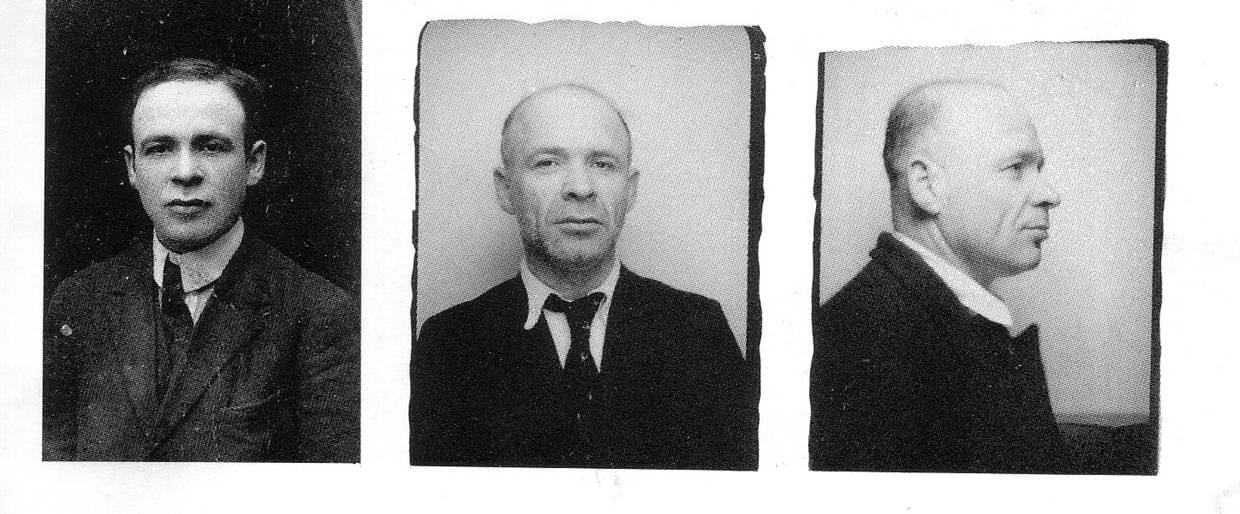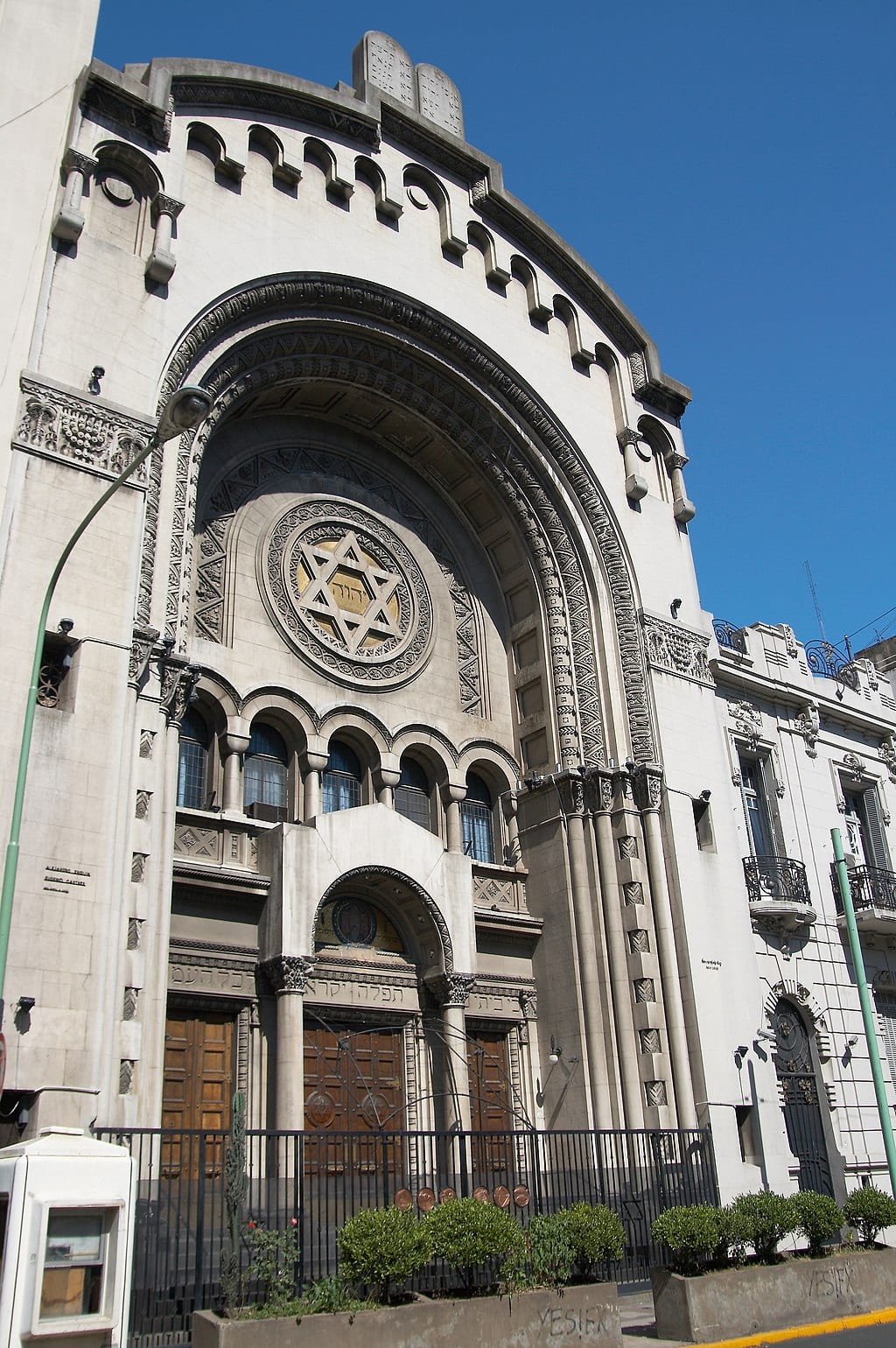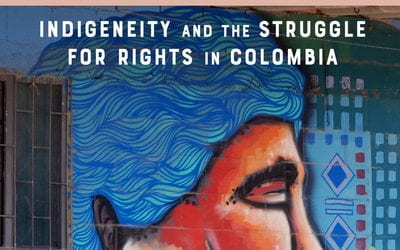In Monsieur Chouchani’s Footsteps
Jewish Belief in Latin America
Monsieur Chouchani—occasionally spelled “Shushani”—is a ghost, at least allegorically. His real name might have been Hillel Perlman, or perhaps Mordechai Rosenbaum, although neither of these options is certain. His death was recorded in Montevideo, Uruguay, in 1968 at the age of seventy-three. I have visited his tombstone at the Israelite Cemetery of La Paz. It was paid by his student Elie Wiesel, the Auschwitz survivor and Nobel Peace Prize winner, to whom Chouchani taught Talmud, the primary text for Jewish law and theology.
Some suggest he was born in Istanbul; others link him to a small town in Belarus, on the border with Poland. Philosopher Emmanuel Levinas was another one of Choichani’s students. They met in Paris in 1947. Levinas described him as a “clochard”—a kind of Parisian bum. They spent five years studying, also reading Talmud. Levinas and Wiesel portray Choichani’s memory as amazing: he could recite without mistake entire passages in Hebrew and Aramaic. He knew another dozen languages and was proficient in current trends in physics, philosophy and mathematics. How he survived the Second World War is unknown.
All we have from him are recollections. Like the Ba’al Shem Tov, the healer who founded the orthodox Hasidim in the 18th century, Chouchani left nothing written; but unlike the Ba’al Shem, he left neither followers nor a school of thought. To me Chouchani is a Jewish variation of Borges’ Ireneo Funes. His mind was a dustbin specializing in Jewish texts—or else, it was a magisterial rabbinical concordance whose value is unsurmountable.
Chouchani plays a central role in my book The Seventh Heaven: Travels through Jewish Latin America (2019).His legacy was the trigger to embark on a five-year exploration of Jewish life across the Spanish-speaking Americas, from the Pampas in Argentina and Brazil to the “Lost Tribes of Israel” in Peru, the plight of the Crypto-Jews in the American Southwest, as well as the so-called “Plan Andinia” in Patagonia. I embarked on the book after I dreamed of Chouchani, although I didn’t know it was him in my dream until much later.
If you ever travel the same route I did, you are likely to follow in Chouchani’s footsteps, too. You quickly find out that not many people know him; yet those that do—rabbis, artists, scholars—form a mysterious club. If you patiently listen to their stories, you’ll realize that Jewish belief in Latin America conforms a peculiar mosaic. Monsieur Chouchani is a commanding figure among certain orthodox believers.
There are approximately 500,000 Jews in Latin America. Like Chouchani, those who have settled there are either refugees of some sort, or they are the children of various types of diasporas. Chouchani might have gone there simply to forget the tragedy of the Holocaust, as did scores of survivors and other displaced people from 1945 onward. In a sense, the Americas were a promised land for them. They were also a promised land for all other Jews as far back as colonial times.
The expulsion from Spain in 1492 pushed cristianos nuevos, marranos, and Crypto-Jews across the Atlantic. Rumors circulated that, in Nueva España and Nueva Granada, for instance, the Holy Office of the Inquisition was more lenient, less destructive in its doctrinal persecution of Judaizers, heretics and other deviants. Successive immigration waves still heard some variation of the same rumors.
When the Yiddish speakers from the so-called “Pale of Settlement” in Eastern Europe made it to the New World at the end of the 19th century, they were escaping pogroms and other anti-Semitic outbursts. The same goes for their French-, Arabic-, and Ladino-speaking contemporaries from Syria, Lebanon, Turkey, Greece and other parts of the crumbling Ottoman Empire.
Ashkenazi Jews, the line of Jews tracing its ancestry to Eastern Europe, settled in agricultural colonies in Argentina and Brazil, then moved to metropolitan centers. Other immigrants made it directly to cities like Mexico City, Lima and Havana. They were united through ritual: the religion of their ancestors remained a unifying force, even when many of them perceived themselves as secular. They were more interested in politics than in theology. Marxism, Socialism, Communism, Anarchism, Zionism, Yiddishism—most were obsessed with looking at the future through progressive eyes.

The cemetery of the Nidhe Israel Synagogue and Museum in Barbados. The synagogue and cemetery date back to the 17th century. “BB Bridgestown 1010 (39)” by Archivo Murciélago Blanco is licensed under CC BY-SA 2.0
Sephardic Jews, whose roots are in Spain, on the other hand, were less ideologically driven. They followed business opportunities connected with rubber and clothing. These two immigrations encountered themselves face-to-face as neighbors in the downtown streets of Lima, Havana and Mexico City.
Like the Holocaust, to which it was directly linked, the creation of the state of Israel in 1948 was a watershed event in modern Jewish history. Within a few decades, it forced new perspectives on just about everything. The “New Man” promoted by Zionism was at first about making Jews “normal.” But such dream cannot be achieved when survival is at stake. Those two elements, normalcy and survival, have given place to a whole range of responses, including religious fervor, not only in Israel but anywhere else where Jews live.
In my journeys across Jewish Latin America, I attended Shabbat services in remote synagogues built in tropical settings. I spent days in yeshivas, rabbinical academies, in Buenos Aires and elsewhere. I attended services for the major holidays Rosh Hashanah and Yom Kippur among recent converts to Judaism, many of them blacks and mestizos. And I spent meaningful hours in graveyards, including one that had been desecrated near Havana.
I came across fanaticism, as well as measured dedication to rituals. The majority of Jews I met describe themselves as conservative in faith, which means they carefully navigate a life oscillating between the public and private realms. They dress in modern clothes, don’t limit themselves to a Kosher diet, and participate in everyday activities. For instance, in Latin America I spent a generous amount of time in dance halls and soccer stadiums.
But these Jews are sandwiched between two extremes. One extreme is made of those Jews decisively rejecting their religiosity through assimilation. They might have a Jewish last name; they might even know a few Yiddish or Ladino words. However, for all intents and purposes they no longer see themselves as members of the tribe.
The other extreme is occupied by orthodox Jews. They are smaller in number yet they function as a model. They don’t necessarily last long in the region. Because of dietary and other ritualistic reasons, they might move to Miami, New York, Los Angeles or Tel Aviv. For the most part, they belong to Chabad and, to a lesser extent, Lubabitcher and other sects.
They marry intra-ethnically and build their lives in isolation—against modernity, so to speak. I find them utterly fascinating, to the point that I confess to sometimes want to secretly be one of them. Yiddish (or a bastardized Yiddish, if that is possible) is their prime language of communication; it is how I communicated with them. They also speak English, Spanish, Hebrew, and on occasion Russian and Portuguese. Deep inside, they feel they less in common with their fellow Argentines or Chileans or Colombians than with the network of similar Chabadniks or Lubanitchers in Boro Park, Crown Heights, Williamsburg, Jerusalem, Toronto, Paris and Johannesburg.
I have studied Torah with them, discussed Talmudic passages, and engaged in mystic explorations. Again, it isn’t a value judgement to state that their Latin Americanness is irrelevant. In their eyes, their habitat is secondary; what matters to them is their devotion and, especially among Chabadniks, their proselytism: if they help other Jews retain a sense of Jewishness, the Messiah will return at a faster speed.
Among the most rewarding aspect of my travels the capacity to read Talmud among strangers. Since I was young in Mexico, I read both the Babylonian and Palestinian editions. To me it was—and remains—an intellectual exercise. There are partial translations of it into Spanish. I don’t like any of them; I prefer the Hebrew and English versions. Beyond that, studying in a yeshiva in Buenos Aires isn’t very different from doing the same in the United States. Actually, there is a difference: since to the best of my knowledge no distinguished rabbinic dynasty has ever emerged in Latin America, the sense one always gets—at least, the sense I get—is that Latin America is peripheral to Jewish faith.
The situation of Jewish mysticism in the region is far direr. There aren’t any real Kabbalists in the Americans, at least none that I know. But Kabbalah does exert a peculiar kind of magnetism. Borges felt the allure and lectured about it; so did his friend the artist Xul Solar, whose real name was Oscar Agustín Alejandro Schulz Solari. But even these approaches to esoteric practices are superficial. In Mexico City, for example, there is a center devoted to the study of the Sephirot, the primordial Adam Kadmon, the Ein-Sof, and other Kabbalistic motifs Madonna and other celebrities become obsessed with. It has no connection whatsoever with Chabad or any other orthodox trend. Instead, it attracts New Age fanatics interested is cosmic energy and other fashionable absurdities.
On several occasion in my odyssey, I imagined myself engaged in a Talmudic conversation with Monsieur Chouchani—maybe in a mix of Yiddish and Spanish known in Buenos Aires as casteidish. Just the sheer chance of have traced his route excited me. He might have been Uruguayan by accident; still, in my estimation he is the closest Latin America has been to having a chacham gadol, a major sage. Perhaps he was one of the so-called Lamed Vovniks, the righteous men. According to Jewish lore, each human generation is composed of a total of thirty-six of these men. Nobody knows who they are: they might be wise or stupid, rich or poor. The fact that they exist keeps the universe going.
Those I spoke to described Monsieur Chouchani as a lightning rod, a sustaining force. Indeed, I felt a special feeling of comfort and continuity while standing next to his tomb, as if a light was emanating from it.
Winter 2021, Volume XX, Number 2
Ilan Stavans is the Lewis-Sebring Professor of Humanities and Latin American and Latino Culture at Amherst College and the publisher of Restless Books. His latest books are The Seventh heaven: Travels through Jewish Latin America (2019), How Yiddish Changed America and How America Changes Yiddish (2020), And We Came Outside and Saw the Stars Again (2020), Popol Vuh: A Retelling (2020), and Selected Translations: Poems 2000-2020 (2021).
Related Articles
Indigenous Peoples, Active Agents
Recently, the Amazon and its indigenous residents have become hot issues, metaphorically as well as climatically. News stories around the world have documented raging and relatively…
Beyond the Sociology Books
If you are not from Colombia and hoping to understand the South American nation of 50 million souls, you might tend to focus on “Colombia the terrible”—narcotics and decades of socio-political violence…
Exodus Testimonios
The audience at Iglesia Monte de Sion was ecstatic as believers lined up to share their testimonials. “God delivered us from Egypt and brought us to the Promised Land,” said José as he shared his testimonio with the small Latinx Pentecostal church in central California…






